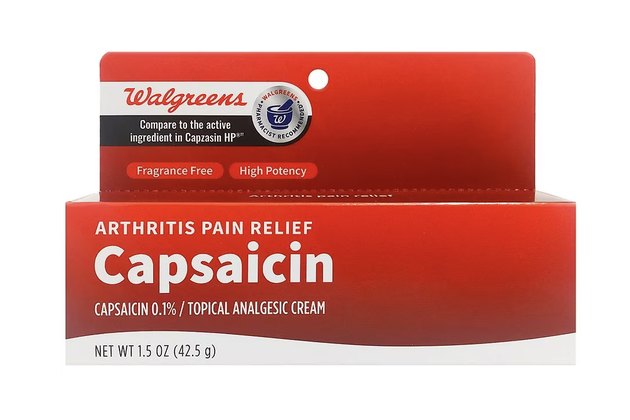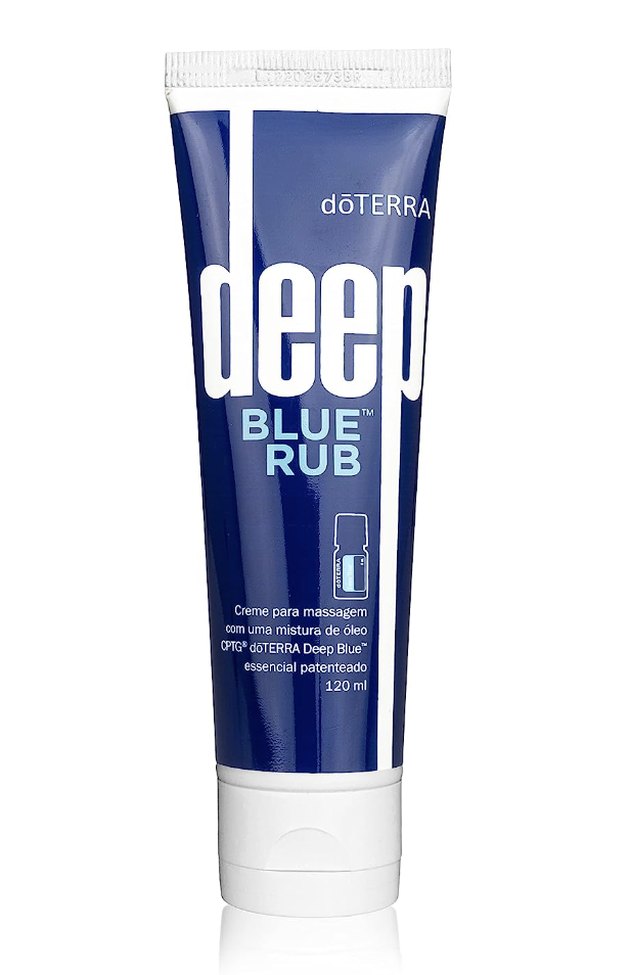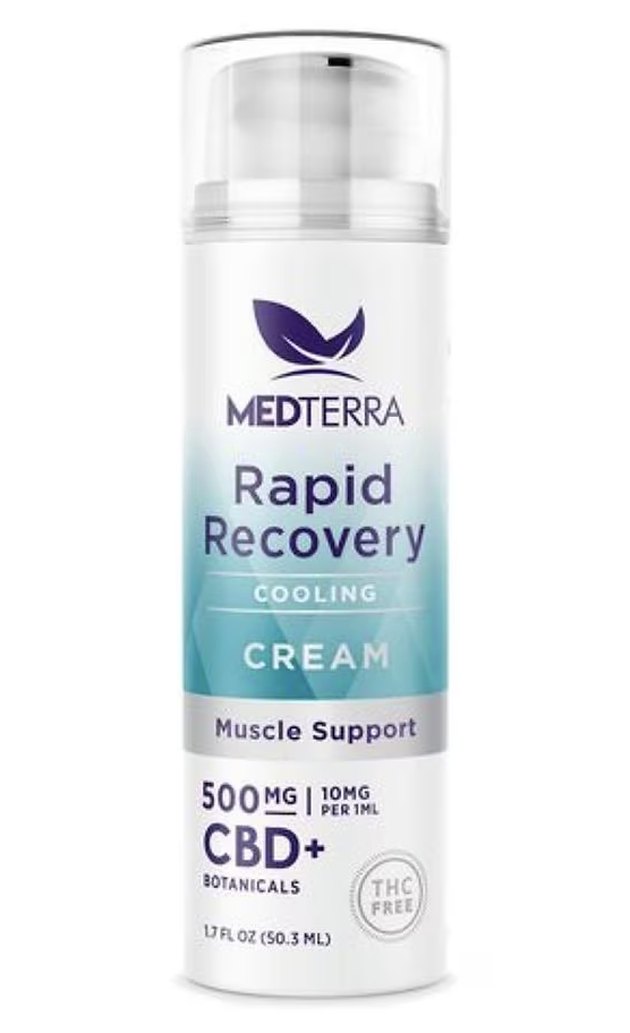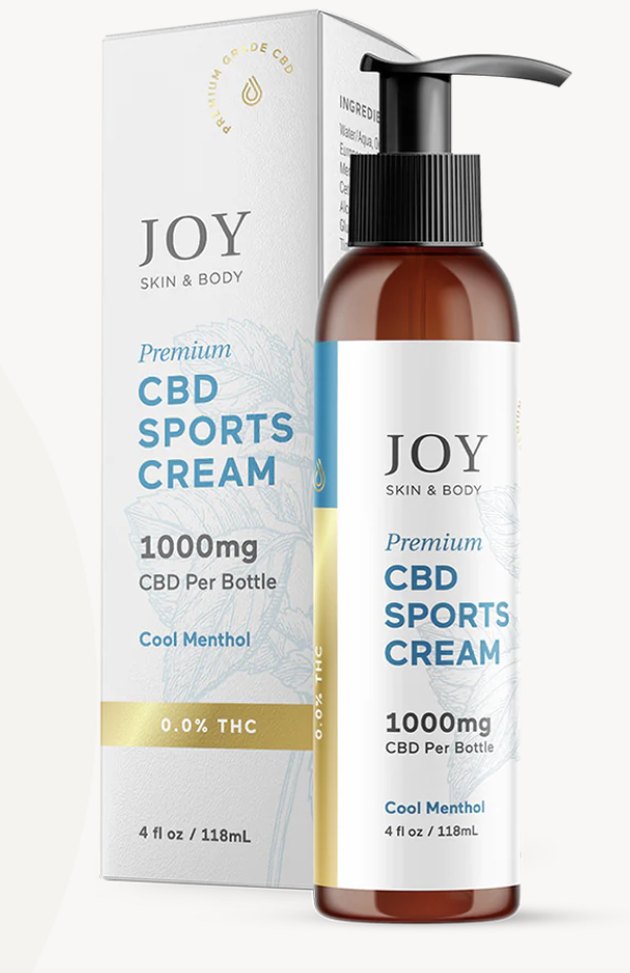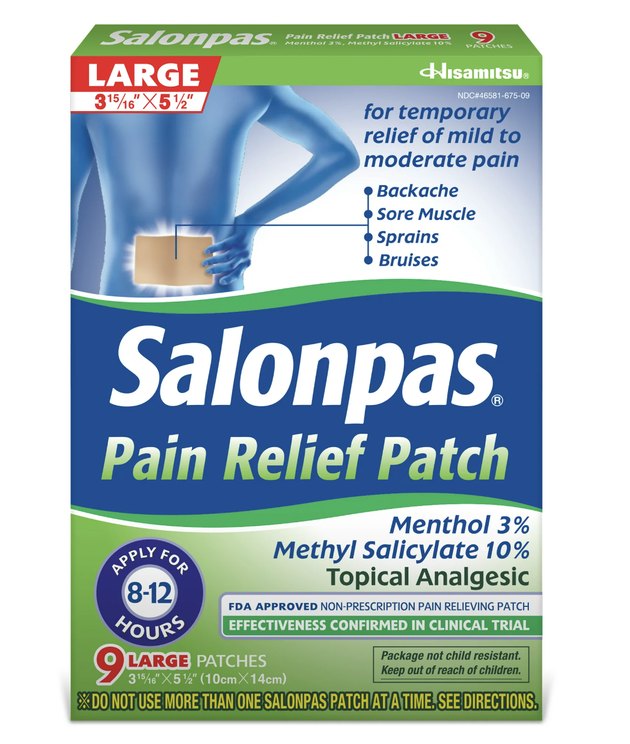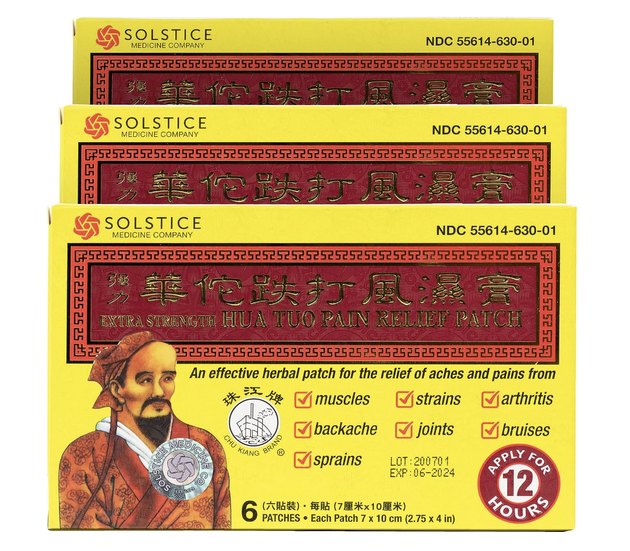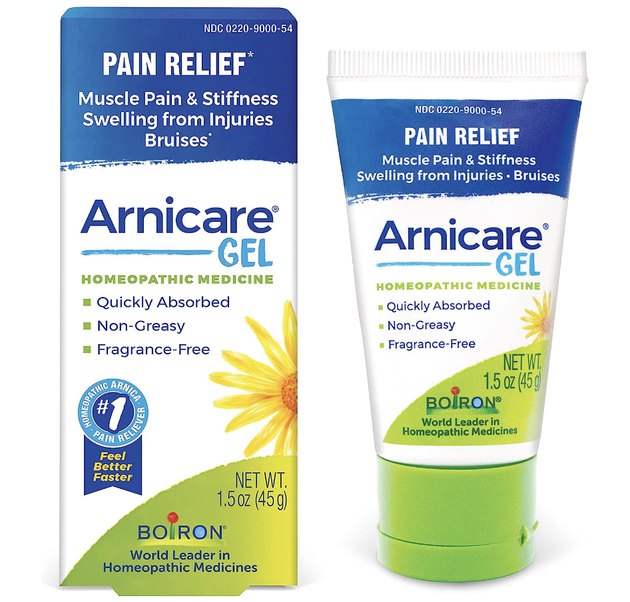
Aches and pains are a pain — to put it mildly. They can affect how you move about your day, how well you sleep and your ability to focus and function. (How will you get good sleep if your back is always twisted in a knot?) And certainly, identifying the root source of your pain will be key in finding relief — but until then, you're looking for pain-relief options that can help you stat.
In general, many people like using topical creams because you can apply them right at the site of the pain, says Susan Blum, MD, MPH, founder and director of the Blum Center for Health in Rye Brook, New York, and author of Healing Arthritis.
Video of the Day
Video of the Day
In addition, they can be an alternative to taking a medication like an NSAID (e.g. ibuprofen), helping you avoid common side effects like gastrointestinal discomfort and upset, Dr. Blum says.
You can purchase topicals that contain medications like NSAIDs, and these are available over-the-counter or through prescription. However, if you're looking for an herbal option, there are natural pain-relief creams, too.
What Is a Natural Pain-Relief Cream?
Products in this category typically contain menthol, camphor, capsaicin and salicylates, Harmandeep Singh, MD, an interventional pain medicine physician at the Hospital for Special Surgery, tells LIVESTRONG.com. These all work in different ways to quell discomfort but generally desensitize nerves, warm or cool the area or improve blood flow.
A natural pain-relief cream will be applied topically where they're absorbed into the skin and then get to work on the tissue.
"These work well for localized, superficial pains, such as inflammation, neuropathic pain, burning pain, sensitivity and muscle spasms," Dr. Singh says.
Here are our top picks.
The Best Natural Pain-Relief Creams
- Best Drugstore Cream: Walgreens Capsaicin Arthritis Pain Relief Cream ($14.49, Walgreens)
- Best Moisturizing Cream: Doterra Deep Blue Rub ($31.99, Amazon)
- Best CBD Cream: Medterra Rapid Recovery Cooling Cream ($39.99, Walgreens)
- Best CBD Sports Cream: Joy Organics CBD Sports Cream ($49.95, Joy Organics)
- Best Patch: Salonpas Pain Relief Patch ($15.94, Walmart)
- Best Chinese Medicine Patch: Hua Tuo Medicated Patch ($16.25, Amazon)
- Best Gel: Boiron Arnicare Gel ($7.49, Amazon)
How We Chose
We chose the best natural pain-relief creams through either specific recommendations from doctors or via the ingredients they suggested focusing on, which include:
- Capsaicin
- Salicylates
- Menthol
- Camphor
- Arnica
All of these ingredients have varying levels of evidence behind them for pain relief, Dr. Singh says.
We also looked at reviews to help round out our choices, and made sure there was a diverse mix of products at various price points and access/availability to help you find something that will work for you.
Find more information on how we choose and cover products here.
Warning
These products are meant for external use only. Keep them away from your eyes and mouth, and make sure to thoroughly wash your hands after application to avoid possible contact with your face.
1. Walgreens Capsaicin Arthritis Pain Relief Cream
Pros
- Uses natural ingredients
- Fragrance-free
- Reasonably priced
Cons
- Can initially cause burning and redness
Getting spicy: Capsaicin is the active ingredient that gives chili peppers their heat. When used topically, "Capsaicin works by dulling nerve endings that regulate pain," Dr. Blum says.
In general, research finds that applying these low-dose creams three to five times per day for two to six weeks modestly improves pain from diabetic neuropathy, musculoskeletal pain and pain that persists after a shingles infection, notes an October 2011 review in the British Journal of Anaesthesia.
Another perk: It's easy to find in your local drug store and is reasonably priced, so you can feel good about applying it throughout the day. A capsaicin cream is a great place to start when trying out natural pain-relief creams, Dr. Blum says.
While Dr. Singh does not recommend specific products, he does warn that when you start out with capsaicin cream, you may feel burning and itching and notice redness, which makes some people stop using it prematurely. However, if you continue to apply it, this discomfort will subside, he says.
2. Doterra Deep Blue Rub
Pros
- Paraben-free
- Softens skin with almond oil and stearic acid
Cons
- Pricey compared to other options
This thick cream is packed with a variety of essential oils, including wintergreen, camphor, peppermint, blue tansy, German chamomile and ylang ylang, plus skin-softeners almond oil and stearic acid.
"This cream is a favorite in our office, and I also like how this is a paraben-free formula. You don't want to bring toxins into your body at the same time you're trying to reduce inflammation," Dr. Blum says.
One important thing to note about this cream: It's expensive, at more than $30 for a 4-ounce tube. If price is a concern, you might want to start out with cheaper options, see if they work for you and then move into more expensive products, if needed, Dr. Blum recommends.
3. Medterra Rapid Recovery Cooling Cream
Pros
- Contains cooling ingredients
- Naturally inhibits pain receptors
Cons
- Studies regarding CBD's effectiveness for pain are limited
4. Joy Organics CBD Sports Cream
Pros
- Easy applicator
- Great for athletes
- Fast-acting
Cons
- Studies regarding CBD's effectiveness for pain are limited
If you're interested in trying CBD, know that it may help relieve pain by inhibiting sensory pain receptors, quieting the nervous system and reducing inflammation, Dr. Blum says. Joint pain doesn't always mean that pain is directly in the joint, but rather the irritation is around the joint capsule, which ends up stressing and overworking surrounding muscles and tendons, she explains.
Just keep in mind that these options can be expensive, and just because they contain CBD does not mean they'll help you find pain relief.
Research to back up the benefits of using CBD is limited, per the Mayo Clinic. Commentary in the November-December 2020 issue of the Journal of the American Pharmacists Association notes the lack of studies, particularly studies involving humans, not animals, and states, "At present, there is insufficient evidence to recommend CBD for the treatment of pain." Plus, CBD products may — or may not — contain the dose that's written on the packaging, according to the Mayo Clinic.
That said, if anecdotal reports of CBD's pain-relieving effects have you intrigued, you can opt to try out different CBD preparations to determine if one works for you. Look for a cream that also contains camphor and/or menthol, ingredients that will "open up circulation to allow CBD to penetrate deeper," Dr. Blum says.
5. Salonpas Pain Relief Patch
Pros
- Can be worn up to 12 hours
- Long-lasting
- Anti-inflammatory
- Budget-friendly
Cons
- Some reviewers say the patches don't stay in place
OK, so this one isn't a cream. But sometimes covering up the site of the pain with a patch just feels really good. "Personally, I've had really good success wearing these types of patches," Dr. Blum says. They can provide concentrated, longer-lasting coverage because they can be worn for up to 12 hours.
Salonpas has a couple of different formulations. One features lidocaine, a numbing agent. This one, however, uses menthol (a chemical from the mint plant) and methyl salicylate (an aspirin-like derivative), and it's one patch that Dr. Blum recommends.
While the methyl salicylate is anti-inflammatory to quiet nerve endings, she says, menthol is helpful in improving blood flow to help clear out cellular debris to encourage relief.
6. Hua Tuo Medicated Patch
Pros
- Contains camphor and menthol
- Wide coverage
- Can stimulate blood circulation
Cons
- Some reviewers said it causes skin irritation if left on for too long
To deal with her shoulder pain, Dr. Blum wears this patch, which is infused with camphor and menthol. "The herbs reduce inflammation and pain. I find it's especially effective on muscle pain," she says.
Like Salonpas, you can apply this patch wherever it's needed. Each patch is roughly 2 3/4-inches-by-4-inches, so it can cover a good amount of area without being bothersome.
7. Boiron Arnicare Gel
Pros
- Anti-inflammatory
- Anti-microbial
- Helps with post-surgical pain
- Budget-friendly
Cons
Arnica can cause skin irritation
Less moisturizing than a cream
This topical features arnica, a flowering plant that has a cooling effect on skin and has been used in homeopathic medicine for centuries, per October 2021 research in Medicines.
Arnica offers anti-inflammatory, antioxidant and anti-microbial properties that may help quell muscle and arthritis pain (with some trials indicating it works just as well as NSAIDs) and is possibly effective in post-surgical pain.
Like any topical product, including natural ones, arnica can cause skin irritation, the study authors point out. It's something to watch for in general when using any new product, including herbal ones.
Users like this product because of the gel formula, which absorbs quickly into skin. (Though that does mean it's less moisturizing than a cream.) Users also rave about using the arnica gel to help fade bruises.
What to Look for in a Natural Pain-Relief Cream
The pain-management aisle is huge (and online is even bigger). Here's how to narrow down your choices:
1. Focus on the Active Ingredient
While products make a lot of claims, some are better than others. "Of the natural topical therapies, capsaicin and salicylates have the best evidence for effectiveness," Dr. Singh says.
He adds that menthol and camphor have limited evidence that they relieve discomfort better than icing or placebo conditions, while arnica has anecdotal evidence that it may help some folks.
2. Talk to Your Doc
Rather than running out to the store immediately, your first step in identifying a natural pain-relief cream for you is to have a conversation with your doctor about your desire to try them.
"A physician can assess a patient to determine the cause of the pain and recommend therapies to treat the underlying pathology," Dr. Singh says.
These creams may be part of a complementary plan. In addition, a doctor or pharmacist can advise you if any of these products will interact with a medication you're currently taking.
3. Experiment
Not everyone will find that each of these ingredients or delivery methods will dull their pain, Dr. Blum says, so you may need to experiment with a variety of preparations before settling on your best options. And, if these are not effective for your pain, talk to your doctor to ask if a medicated prescription topical is a good choice for you.
4. Identify Your Price Point
Cost certainly matters, with some of these options being on the more affordable side, and others considered a splurge. More expensive doesn't necessarily mean more effective, so don't be afraid to start out with less costly products before moving up in price if needed.
- Practical Management of Pain (Fifth Edition): “Minor and Short-Acting Analgesics, Including Opioid Combination Products.”
- British Journal of Anaesthesia: Topical capsaicin for pain management: therapeutic potential and mechanisms of action of the new high-concentration capsaicin 8% patch
- Medicines: “Clinical Trials, Potential Mechanisms, and Adverse Effects of Arnica as an Adjunct Medication for Pain Management.”
- Journal of the American Pharmacists Association: "CBD for the treatment of pain: What is the evidence?"
- Mayo Clinic: "What are the benefits of CBD — and is it safe to use?"
Is this an emergency? If you are experiencing serious medical symptoms, please see the National Library of Medicine’s list of signs you need emergency medical attention or call 911.
